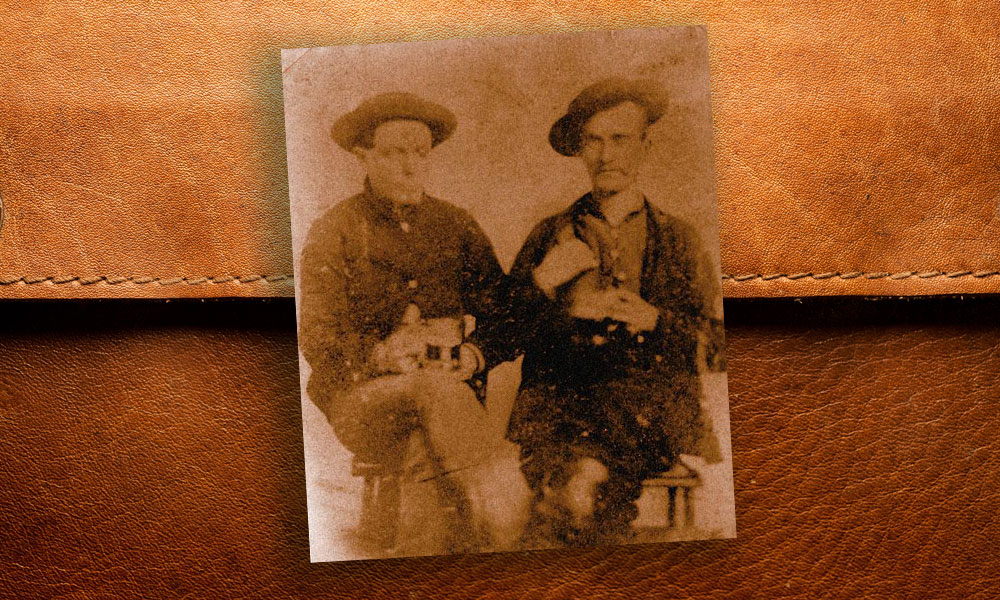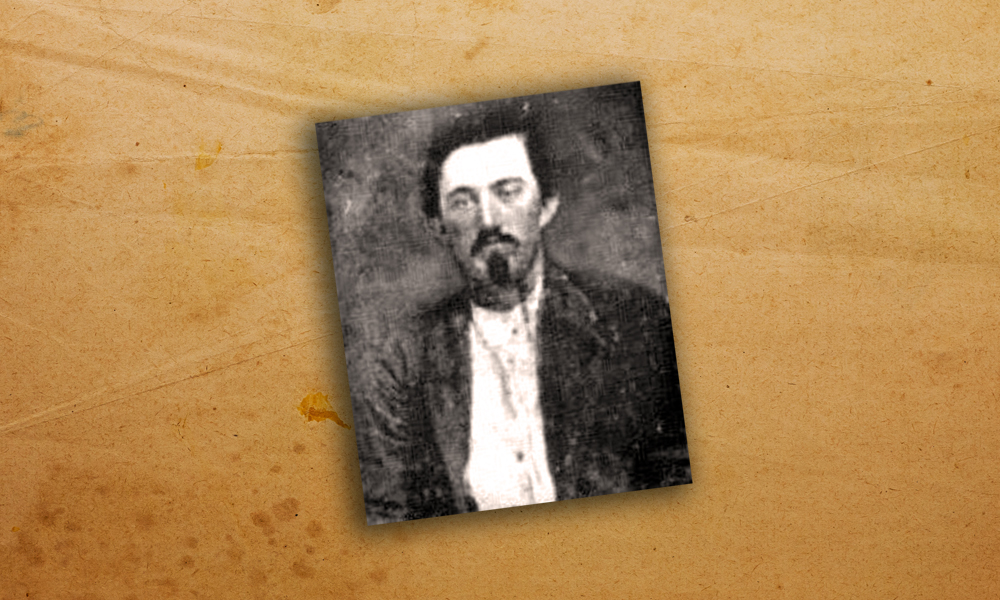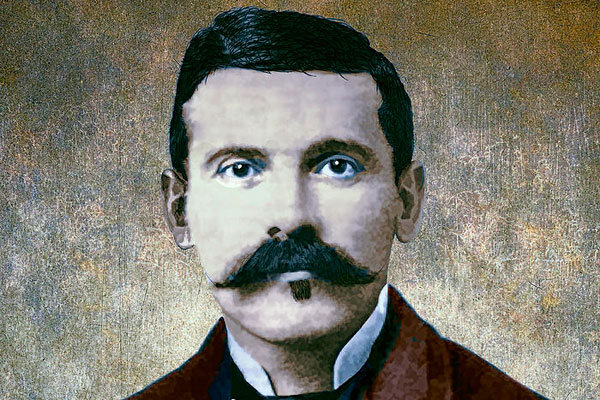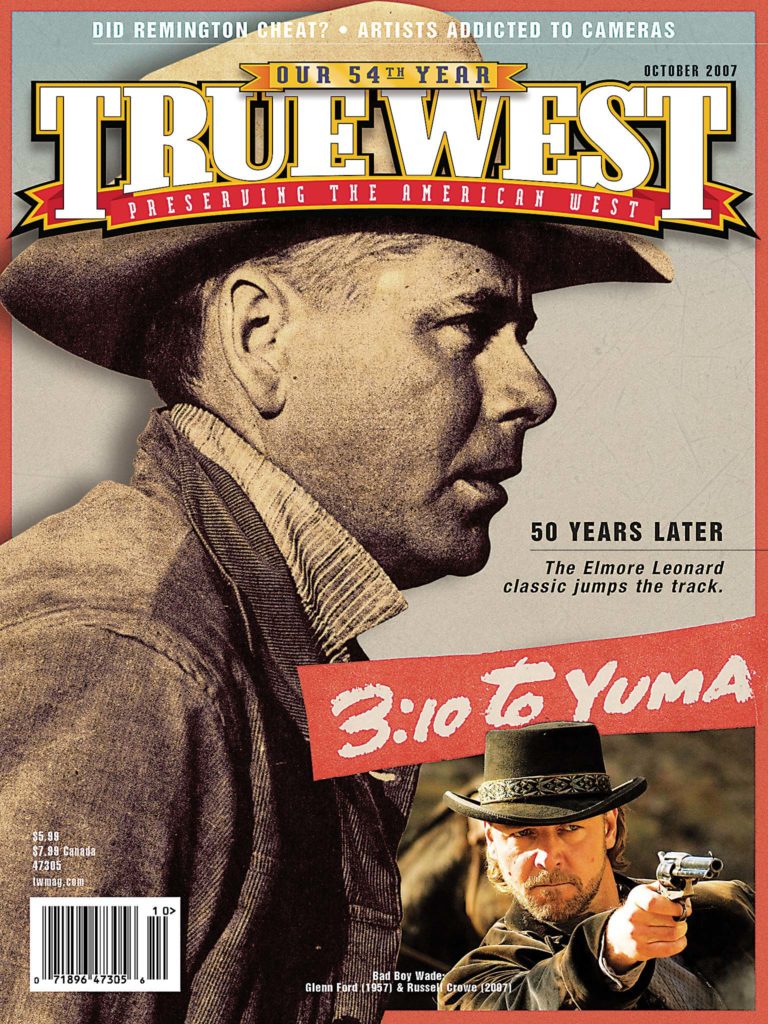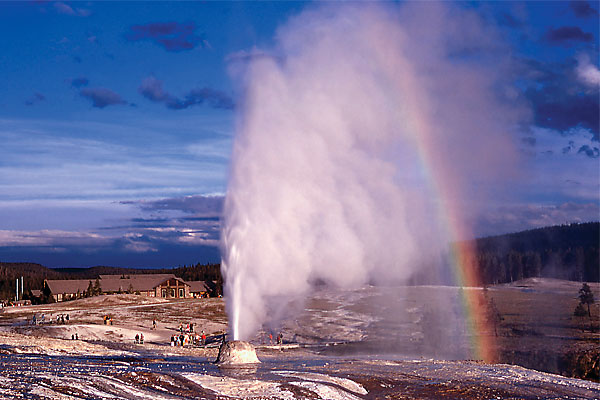 Screeching and yelling “like so many devils,” the Blackfeet grabbed at the driftwood raft hovering above the swimming naked man.
Screeching and yelling “like so many devils,” the Blackfeet grabbed at the driftwood raft hovering above the swimming naked man.
Although humiliated by the Indians’ sport of having him strip and run for his life as a warrior chased after him, John Colter was a clever man who could outwit his opponents—even despite the prickly pear thorns in his feet and the throbbing hot sun beating down on his naked body.
After all, Colter had tricked the warrior by stopping short and turning around, feigning to give him a bear hug. The warrior tripped and broke his spear, which Colter swiftly picked up to fatally jab his pursuer. The Mountain Man was no greenhorn. He had traveled for nearly three years with Lewis and Clark, who enlisted him among nine other men from Kentucky to become part of their Corps of Discovery to explore the Louisiana Purchase. For the past two years, he’d been trapping beaver for Manuel Lisa’s Missouri Fur Company.
That summer of 1808, he wasn’t about to let the Blackfeet get the best of him. When night came and all was silent, he swam farther down the river. Once on land, he began his 300-mile, seven-day journey on foot to Manuel Lisa’s fort on the Bighorn branch of the Roche Jaune River.
The story of Colter’s dangerous escape from the Blackfeet, so wonderfully recorded in John Bradbury’s 1819 Travels in the Interior of America, played a large role in catapulting this fur trapper to fame. Yet if not for his venture to Yellowstone Country in the winter of 1807, when Colter first clashed with the Blackfeet, they might not have been after his scalp in the first place.
Colter’s Haunts
We will begin our discovery of Colter’s haunts with Bismarck, North Dakota. In Keelboat Park, see a replica of the style of boat Lewis and Clark used on the Missouri River and view Plains Indian artifacts at the North Dakota Heritage Center.
From Bismarck, travel north on U.S. 83 to Washburn to visit the Lewis and Clark Interpretive Center with exhibits related to the expedition, information about the fur trade and steamboat era, and artwork by Karl Bodmer, who captured early Plains Indian images on his canvas. Just two miles from the interpretive center is a reconstruction of Fort Mandan, where the Corps of Discovery returned in 1806 and where 32-year-old Colter met two westbound trappers from Illinois, Forest Hancock and Joseph Dickson. His captains relieved him of his duty so he could join these trappers and return to the region he had just barely explored on the previous two-year journey—the Yellowstone River Country.
Upon leaving the Washburn area, you can follow a series of local roads that skirt the Missouri River, or continue on U.S. 83 north to Minot before taking U.S. 2 west to Williston. From Williston, continue west and follow local road 1804 to Fort Buford State Historic Site and Fort Union Trading Post National Historic Site. The latter location had been identified by Lewis and Clark as a prime place for a fur trade post. From 1828 until 1867, Fort Union was the most important trading site along the Upper Missouri River. Today it is restored.
Leaving Fort Union, take road 58 across the Missouri River and tie in with Montana Route 200 before following Montana Highway 16 to Glendive, where you connect with Interstate 94 that you can drive west toward Billings. This route traces basically along the trail Colter followed with Manuel Lisa and his former Lewis and Clark comrades—George Drouillard, Peter Wiser and John Potts. Colter, having taken leave of Dickson and Hancock in the spring of 1807, was on his way East when he came across the party. He agreed to guide them toward the Yellowstone River, reaching that point by October 1807.
Colter and companions left the Yellowstone at the confluence with the Bighorn River. To stick to their route, take Montana Road 47 south from Bighorn, Montana, to Hardin. It is impossible by car to remain on their trail all the way across the Crow Indian Reservation, although you can travel south on road 313 to Fort Smith, site of old Fort C.F. Smith (a Bozeman Trail-era compound). If you do, you will need to backtrack to St. Xavier and travel west to Pryor before taking a rougher, dirt road south to Warren, where you’ll reach U.S. 310 that will provide access to Lovell, Wyoming. This will take you through open, often uninhabited, country and is suitable if you drive a high clearance vehicle, like my Subaru, or an even bigger SUV or pickup. A better car route is to remain on I-94 to Billings and then to follow I-90 west to Laurel where you can drive south onto U.S. 212/310.
Colter’s Hell
Colter split from his companions in late fall of 1807 and took a circuitous course over the next several months that put him in places likely never before viewed by white men. Probably in company with Crow Indian guides, he trekked through country difficult to traverse even during summer. With him, he had about 30 pounds of equipment including knives, needles, awls, beads, vermillion and tobacco, all items that could be traded with Indians to assure safe passage.
He journeyed up the South Fork of the Stinking Water River (today’s Shoshone River west of Cody). He likely ventured over the Owl Creek Mountains to reach the headwaters of the Wind River, passed by Brooks Lake (north of Dubois) and then entered Jackson Hole (a place later named for trapper David Jackson). He probably went as far west as Idaho’s Teton Basin and almost certainly ranged into today’s Yellowstone National Park.
Colter’s description of bubbling mud pots, spouting geysers and other natural features became dubbed “Colter’s Hell.” The original location so named was just west of Cody, Wyoming, although in time even more extensive thermal features to the west also occasionally took the name Colter’s Hell. That area eventually became Yellowstone National Park, and almost certainly Colter was in the area on his solitary excursion during the winter of 1807-08, passing what would become Heart Lake and Yellowstone Lake before fording the Yellowstone River.
To see some of the sights Colter once did, travel west from Lovell on U.S. Alt. 14 to Cody, home of the magnificent Buffalo Bill Historical Center. The Draper Museum of Natural History includes dioramas and exhibits showing the kinds of animals and terrain Colter would have seen on his ventures. Here, too, you can visit Old Trail Town, a collection of historic structures from throughout the Bighorn Basin, and a place where the body of Mountain Man Jeremiah “Liver Eating” Johnson has been reburied. From Cody, travel south on Wyoming route 120 to Thermopolis to soak in its hot mineral pools. Continue south on U.S. 20 to Shoshoni, turn west on U.S. 26 to Riverton and follow that highway northwest to Dubois. Here you will find the Center for North American Wild Sheep, which conducts winter tours to Rocky Mountain bighorn sheep range on Whiskey Mountain, and the Wind River Historical Center, with collections of buildings and artifacts from the early settlement days in the region.
Continue northwest from Dubois on U.S. 26/287 to cross Togwatee Pass and enter Jackson Hole, where Colter almost certainly spent part of the winter of 1807-1808. (You may find road construction on Togwatee, but the delays are not overly long and you have the chance to see moose, elk, possibly black or grizzly bear as you make the trip.) Colter is believed to be the first white explorer to step foot in Jackson Hole.
Colter eventually continued over the western pass to Teton Basin. You can follow his general route by traveling west to Jackson and then taking Wyoming route 22 over Teton Pass and dropping into Idaho’s Teton Basin. In Jackson, visit the Museum of Wildlife Art and the Jackson Hole Museum. In the summer, attend the Jackson Hole Music Festival at the foot of Jackson Hole Ski Resort in Teton Village. You can take part in Old West Days activities, including a Mountain Man trading camp, over Memorial Weekend, or attend the Jackson Hole Art Festival in September.
Once you’ve visited Teton Basin and Jackson, I recommend backtracking through Grand Teton National Park. Visit the restored ferry across the Snake River at Menor’s Ferry, just east of the Moose Visitor’s Center and Park Entrance; hike around Jenny Lake, named for trapper Beaver Dick Leigh’s Indian wife Jenny; and watch for moose, osprey, eagles, elk, bear and other critters as you drive Teton Park Road. Be certain to stop at Colter Bay Visitor’s Center on the northern edge of Grand Teton National Park, which has a remarkable Plains Indian collection, including an extensive display of moccasins. From here, continue north into Yellowstone National Park, where you, too, can see the fiery spectacle of bubbling mud pots, steam vents, fumaroles
and geysers. Best of all, you can make this trip in winter, as
Colter did, or see the same territory during the summer. For a winter venture, take a guided snowmobile or snowcoach trip; in summer, you can explore the region on your own.
Colter eventually traveled back to the Three Forks area of the Missouri River in Montana. He had been leading a party of Crow and Salish Indians to trade at Manuel Lisa’s Fort Raymond when Blackfeet warriors attacked them. Colter joined in the fight against the Blackfeet. It is this “voluntary” involvement in the battle that historians credit as the reason why the Blackfeet felt such ill will toward him.
He was wounded in the leg during that battle. No sooner had he recovered from that wound, when he found himself trapping beaver in Blackfeet Country again. That summer venture nearly cost him his life. His “naked run” was not his last run-in with the Blackfeet, but they never did get their man. Within a few years, Colter had traveled east to become a farmer in Missouri, where he died of jaundice in 1813.


